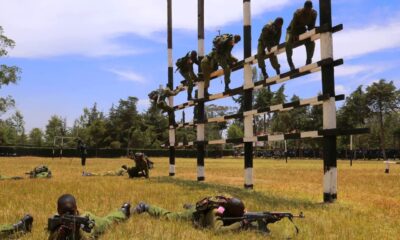Ysabel’s case, I later determined after an hour of being referred from one phone line to another, had been transferred to the Board of Immigration Appeals — America’s highest administrative body for interpreting and applying immigration law. When I finally got ahold of someone from the office to inquire whether a court date had been set for Ysabel’s case, I was told that there was none. Instead of holding hearings, the court decides most cases behind closed doors, usually based solely on “paper review.” When I asked if the office could estimate how long it might take for a decision to be reached, I was told bluntly “there’s no timeline for the board.”
The power the government wields over Ysabel’s fate is difficult to fully grasp. The purgatory she and other asylum seekers are made to endure often lasts for months or even years. All across the country, migrants like her are being shut off from public view in hundreds of facilities that are largely unaccountable to the outside world. Few other countries are engaged in imprisoning noncriminals at such a scale: According to the Geneva-based Global Detention Project, the American immigration detention system is the largest in the world, and one of the few that locks up migrants in criminal-style prisons.
An internal report conducted by U.S. Immigration and Customs Enforcement (ICE) in 2009 plainly states that the agency’s detention model “relies primarily on correctional incarceration standards designed for pretrial felons,” standards that, ICE admits, “impose more restrictions and carry more costs than are necessary.” But these costs represent immense profits for the private detention industry: In fiscal year 2016, roughly two-thirds of all detained migrants (more than 260,000 people) were held in for-profit facilities, generating more than $4 billion in revenue.
Prolonged detention magnifies the most dehumanizing elements of the migrant experience — the commodification of bodies that occurs as migrants are trafficked, the dangers they endure along our militarized border and the criminalization thrust upon them from the moment they cross it. All of that is concentrated within the walls of the detention center. The women I meet feel this keenly. “I hope I can soon leave these four walls,” they tell me, because within them, “it’s like we are animals.”
The acute power of this dehumanization is also meant to serve as a tool of deterrence. Deterrence, after all, has become the underlying philosophy of border enforcement — the ever-growing danger and expense of crossing our Southwestern deserts, the horrifying prospect of parents being separated from their children, the destabilizing uncertainty of being imprisoned with no end in sight. All of it is meant to discourage, dissuade and ultimately break the spirit of the would-be migrant.
One of the women I visit regularly, a 57-year-old grandmother from Guatemala, recently admitted to me that she was considering dropping her asylum claim in order to be deported as soon as possible. The power she felt crushing her after more than half a year of detention was becoming even more unendurable than the overwhelming fear that led her to flee her home in the first place. “No puedo aguantar mas,” she told me — “I can’t take it any longer.”
This, I wanted to tell her, was the system working as it was designed. Instead, I told her not to lose faith, not to give up, wondering all the while if the refuge she sought here might be withheld from her forever.
Francisco Cantu is a former Border Patrol Agent and the author of “The Line Becomes a River: Dispatches From the Border.”
The Times is committed to publishing a diversity of letters to the editor. We’d like to hear what you think about this or any of our articles. Here are some tips. And here’s our email: [email protected].
Follow The New York Times Opinion section on Facebook, Twitter (@NYTopinion) and Instagram.

 General News7 days ago
General News7 days ago
 General News7 days ago
General News7 days ago
 General News7 days ago
General News7 days ago
 General News6 days ago
General News6 days ago
 General News1 week ago
General News1 week ago
 Jobs6 days ago
Jobs6 days ago
 General News5 days ago
General News5 days ago
 Sports5 days ago
Sports5 days ago

